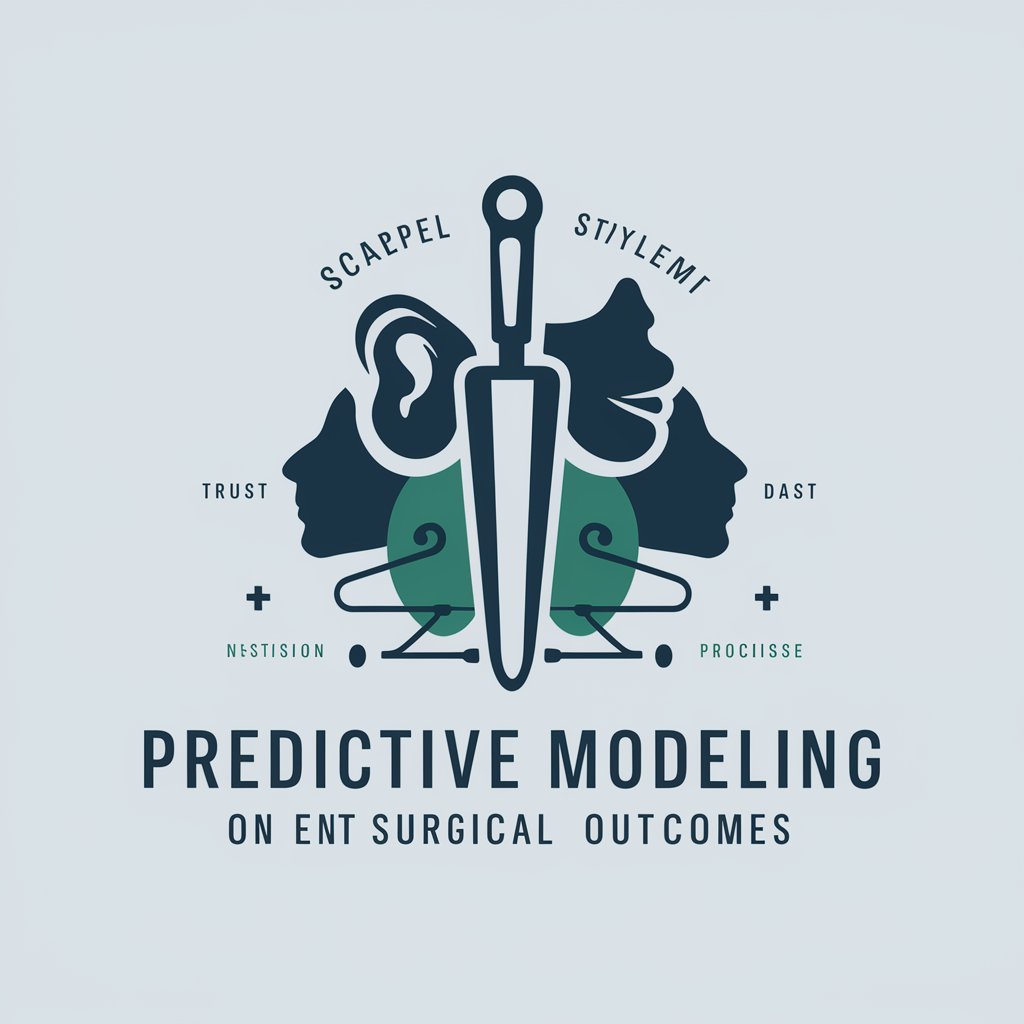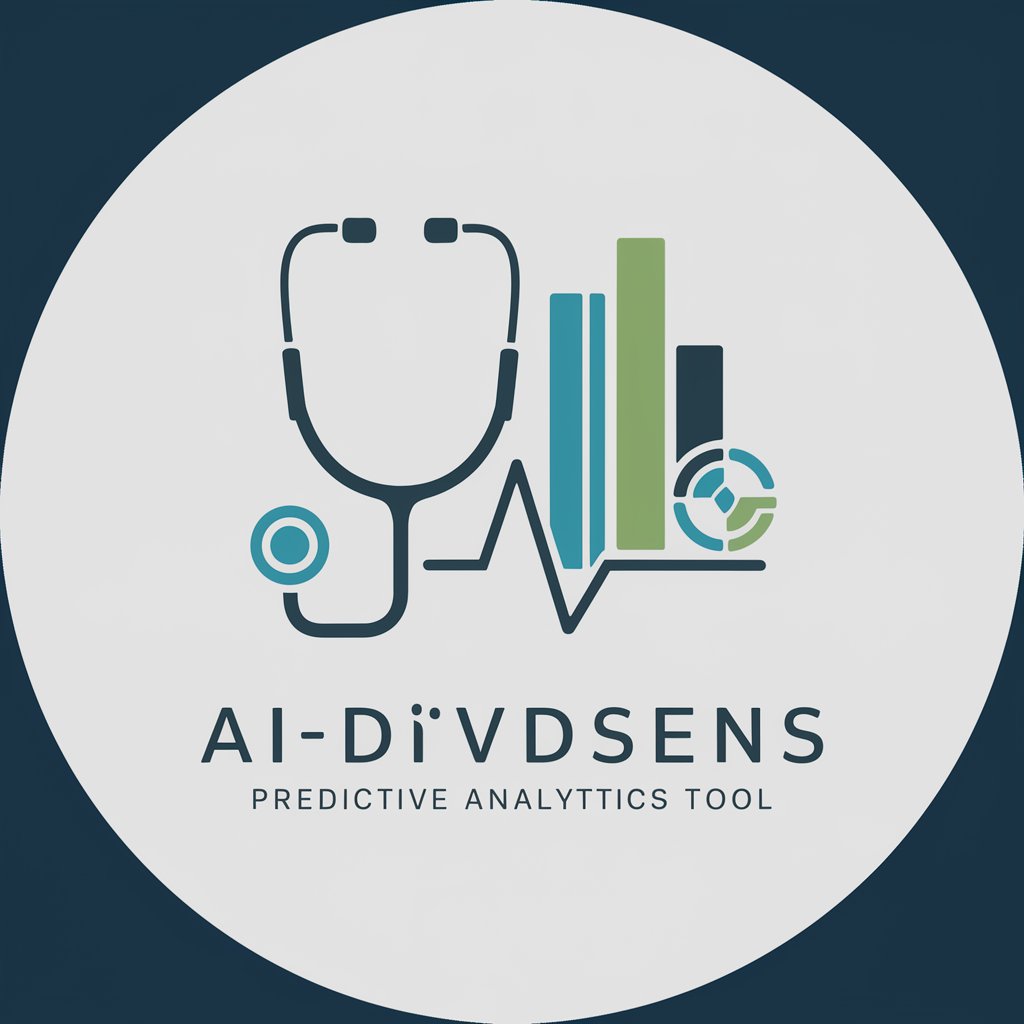Predictive Modeling for ENT Surgical Outcomes - Predictive ENT Surgery Tool

Welcome! Let's explore predictive models for ENT surgical outcomes together.
Predicting ENT Surgery Outcomes with AI
What are the potential outcomes of a tonsillectomy in a 10-year-old patient with recurrent infections?
How does patient age affect the recovery time after a septoplasty?
What factors increase the risk of complications in cochlear implant surgery?
Can you provide statistical insights on the success rates of sinus surgeries for chronic sinusitis?
Get Embed Code
Overview of Predictive Modeling for ENT Surgical Outcomes
Predictive Modeling for ENT Surgical Outcomes is designed to assist in anticipating the results of surgeries within the ear, nose, and throat (ENT) specialties by analyzing various data inputs related to surgical procedures, patient demographics, and historical outcomes. This approach leverages statistical methods and machine learning techniques to estimate the likelihood of specific surgical results, such as complication rates, recovery times, and success rates of surgeries. For example, by inputting data from previous tonsillectomy patients, the model can help predict outcomes for new patients undergoing the same procedure, considering factors like age, prior health conditions, and surgical techniques. Powered by ChatGPT-4o。

Core Functions of Predictive Modeling for ENT Surgical Outcomes
Risk Assessment
Example
Assessing the risk of postoperative complications in sinus surgery
Scenario
The model analyzes past data on sinus surgeries to provide a risk profile for new patients, indicating potential complications like infections or the need for revision surgeries based on the patient's health history and the specifics of their planned surgery.
Outcome Prediction
Example
Predicting the success rate of cochlear implants
Scenario
Using data from previous cochlear implant surgeries, the model can predict the likelihood of successful hearing restoration, factoring in variables such as the patient's age, underlying medical conditions, and the duration of deafness before surgery.
Recovery Time Estimation
Example
Estimating recovery times for patients undergoing adenoidectomies
Scenario
The predictive model calculates expected recovery durations by analyzing outcomes from similar previous surgeries, thus helping surgeons provide more accurate recovery timelines to patients and their families.
Target User Groups for Predictive Modeling for ENT Surgical Outcomes
ENT Surgeons
ENT surgeons can utilize the predictive models to plan surgeries more effectively, tailor preoperative discussions based on predicted outcomes, and set realistic expectations with patients regarding the results and recovery process.
Hospital Administrators
Administrators can use these predictions to better allocate resources, manage surgical schedules, and improve patient care pathways by understanding potential bottlenecks or high-risk procedures that may require additional support or specialized care.
Research and Development in Medical Devices
R&D departments in medical device companies can leverage outcome data to enhance device design, tailor devices to specific populations, and use predictive outcomes to support clinical trials and regulatory submissions.

How to Use Predictive Modeling for ENT Surgical Outcomes
Step 1
Visit yeschat.ai to explore a free trial of the predictive modeling tool without the need for logging in or subscribing to ChatGPT Plus.
Step 2
Input patient-specific data, including age, medical history, type of ENT surgery planned, and pre-existing conditions. Ensure the data is accurate to enhance prediction accuracy.
Step 3
Choose the specific surgical outcome you are interested in predicting. Options may include postoperative recovery time, risk of complications, or expected improvements in symptoms.
Step 4
Analyze the predictive results provided by the model. Use these insights for preoperative planning and to counsel patients about potential outcomes and risks.
Step 5
Regularly update and calibrate the model with new patient data and outcomes to maintain accuracy and relevance over time.
Try other advanced and practical GPTs
Predictive Analytics for Patient Outcomes
Transforming Data into Health Insights

Census Explorer
AI-powered U.S. Census data exploration tool

Spanish Conjugation Coach
Master Spanish Verbs with AI-Powered Coaching

PhotoFilm
Smart Guide to Film Photography

Lord Tannenbaum
Revamp Your Tree with AI Expertise

Artistic Muse
Elevate Your Art with AI Wisdom

Stitch Please
Unleash Creativity with AI-Driven Embroidery

Image Renamer Pro
AI-driven precision for image renaming

Rename Helper
Bridging Cultures with Every Name

GPT Translate
Precision in every word, powered by AI

Français GPT 5
Empower Your Conversations with AI

Conundrum me
Navigate Ethical Dilemmas with AI

FAQs on Predictive Modeling for ENT Surgical Outcomes
What type of data is needed to use the predictive model effectively?
Effective use of the predictive model requires detailed patient data, including demographic information, medical history, specifics of the ENT condition, and details of any previous treatments or surgeries.
How accurate are the predictions made by this tool?
The accuracy of predictions depends on the quality and completeness of the data inputted into the model, as well as the specific condition and patient variability. The tool uses historical data trends to make the best possible predictions.
Can this tool predict the cost of ENT surgeries?
While primarily focused on clinical outcomes, the tool can be adapted to predict surgical costs based on factors like expected duration of surgery, required medical resources, and postoperative care needs.
How can this tool help in improving patient satisfaction?
By providing more accurate predictions of surgical outcomes, this tool helps surgeons set realistic expectations with their patients, potentially improving satisfaction through better informed consent and preparation.
Is this tool suitable for all types of ENT surgeries?
This tool is designed to be adaptable across various ENT surgeries but may require specific adjustments or calibrations to optimize predictions for certain complex or less common procedures.
